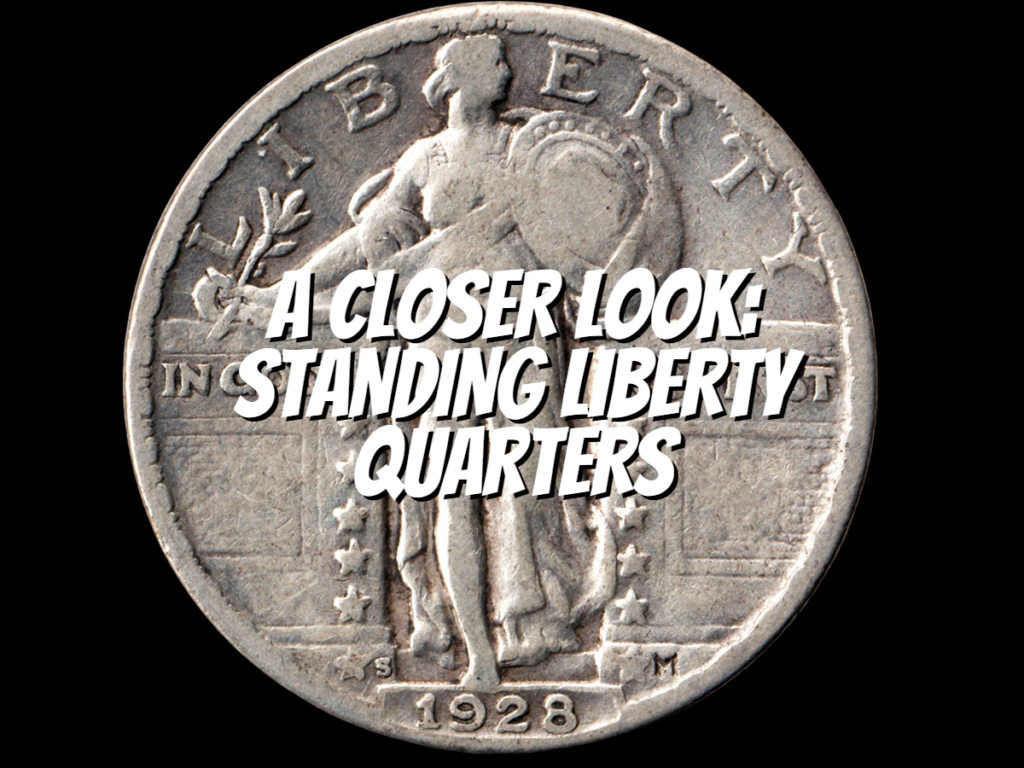Standing Liberty Quarters are a great addition to any coin collection. They were produced from 1916 to 1930, with some of the most popular and valuable coins in the series being produced in 1917 and 1921.
In this article, we’ll take a closer look at these coins. From its origin, design, key dates, and the most valuable Standing Liberty Quarters!
Origin of Standing Liberty Quarters
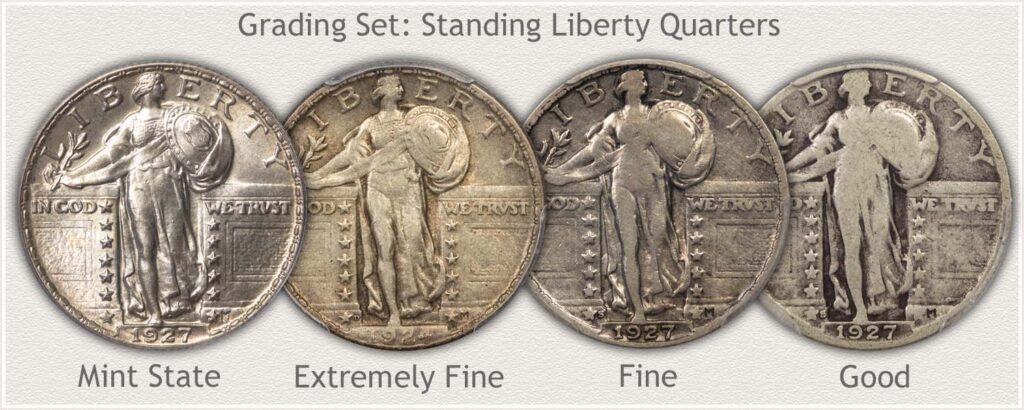
In 1907, Augustus Saint-Gaudens’s new designs for the $10 eagle and $20 double eagle gold coins were released into circulation, marking the beginning of the United States’ “Renaissance” coinage.
All five gold coins, the cent, and the nickel, were redesigned and put into circulation that year (1913). In 1916, the Mint finally replaced the outdated “Barber” designs on the nation’s dime, quarter, and half-dollar coins.
In 1915, a contest asked artists to design each of the three coins. The judges deemed “Standing Liberty” by Hermon MacNeil to be the quarter’s best entry.
The design more closely followed the older Seated Liberty quarter motif, with Lady Liberty’s entire body rather than just her head.
Only 52,000 Standing Liberty quarters were struck by the end of 1916 because of design delays (mostly due to objections from Mint Chief Engraver Charles Barber, whose coin designs were being replaced).
Hiding the Booby
A common misconception regarding Liberty’s exposed breast in the original Standing Liberty design and its covering claims that moral outrage was the driving force behind the design change in mid-1917.
This “fact” has been cited repeatedly and has even appeared in numismatic reference books.
However, an analysis of the situation reveals that there wasn’t much if any, public scandal over the design.
When researching “the legend of the booby,” renowned numismatic historian Roger Burdette discovered no evidence of moral outrage at the time.
On the other hand, major newspapers at the time noted the clear lack of controversy surrounding Liberty’s attire.
The current hypothesis is that Liberty’s chainmail outfit responded to America’s entry into World War I because MacNeil altered other design aspects, such as redesigning Liberty’s head and rearranging the stars on the reverse.
Now that we were at war, an exposed bosom on Liberty might have given the impression of weakness or vulnerability to America’s adversaries.
Date
The dates on the Buffalo nickel and the Standing Liberty quarter were placed too high above the field and wore out quickly under normal use.
The nickel largely ignored the issue, but in 1925, the date at Liberty’s feet was recessed on quarters.
Coin Design

Standing Liberty quarter collectors use “Full Head” standards to identify superior strikes, similar to Jefferson nickel collectors’ “Full Steps” on Monticello. One of the highest points on the Square of the Standing Liberty is the top of Liberty’s head.
In addition to being one of the first spots to show wear, this also means that a less-than-perfect strike will not reveal all of the details. When assigning a Full Head (FH) designation, the following standards are used by the majority of coin grading services:
- On Liberty’s helmet, there are three complete and distinct leaves.
- The helmet must reach the bottom across Liberty’s forehead.
- The helmet’s ear hole needs to be visible.
This high premium can be attributed to the extreme rarity of coins that meet the standards for a “Standing Liberty” quarter. For reference, a 1918 Standing Liberty quarter graded Mint State-65 costs $550. If it is a Full Head version of the same coin, it is worth $2,500,000.
Key Dates
1916
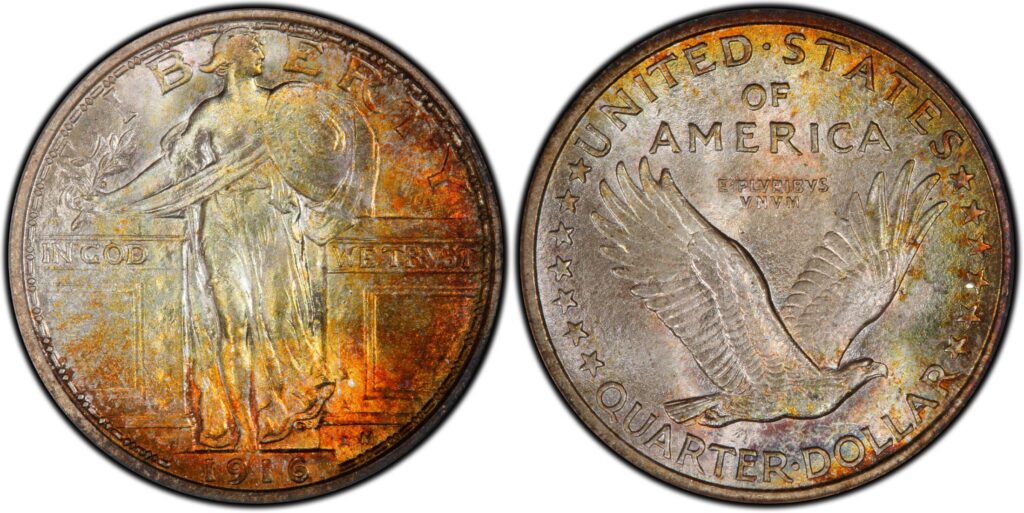
The 1916 Standing Liberty Quarter meets almost every criterion for a key date coin. It was only issued for one year, and only 52,000 were minted in its first year.
If you want a complete set of Standing Liberty quarters, you’ll need to spend the most on this one, at $1,000 for the lowest grade.
1918/7-S

The only significant variation in the Standing Liberty series is the 1918/7 overdate struck at the San Francisco Mint. Due to its obvious overdate and small mintage, this coin is the most expensive Standing Liberty rarity in high Mint State grades and a top key date.
1919-D
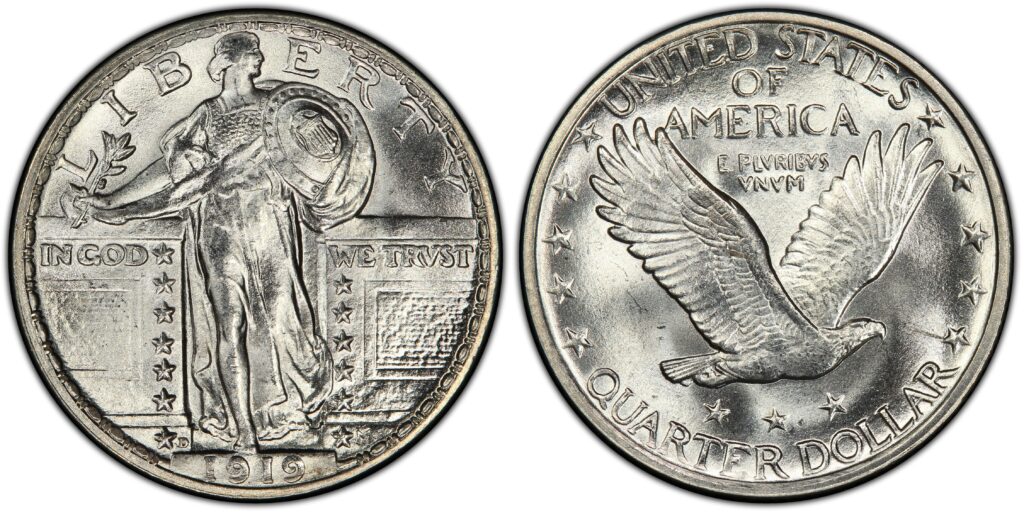
Fewer than 2 million 1919-D Standing Liberty quarters were minted, and only a small percentage are still in circulation today. This date’s high cost persists everywhere.
1919-S
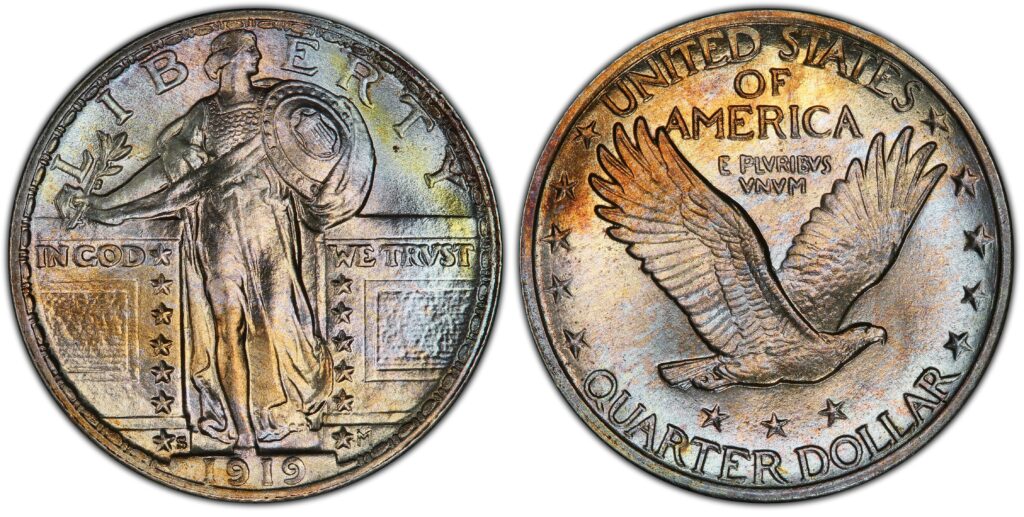
A similar number of survivors and prices can be found for the 1919-S Standing Liberty Quarter, which also had a mintage of less than 2 million coins. Compared to 1919-D, 1919-S is underrepresented in the highest uncirculated grades. Because of this, prices for the 1919-S are significantly higher than those for the Denver mintage.
1927-S
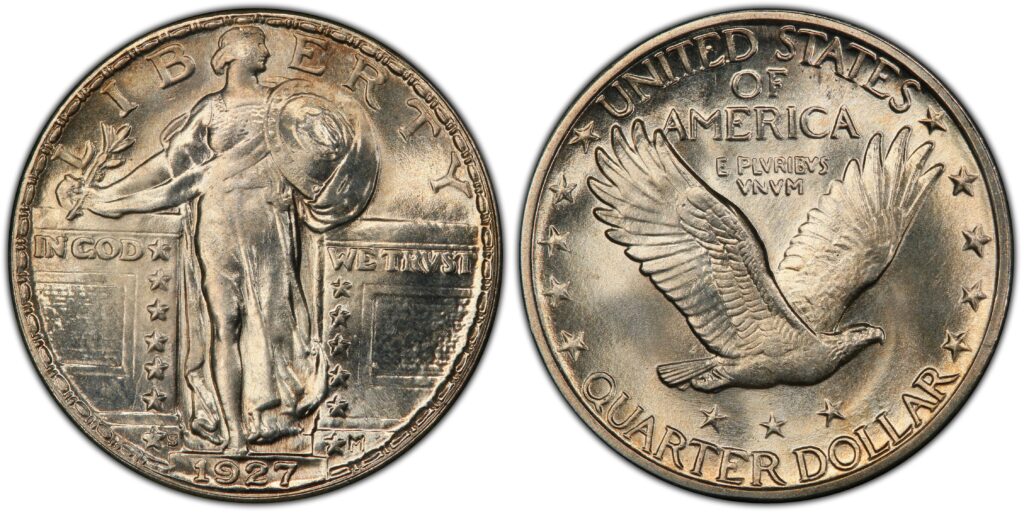
With a total mintage of just 396,000 coins, the 1927-S Standing Liberty quarter is the rarest and one of the most expensive in higher circulated and uncirculated grades. The only other coin in the series with a lower mintage is the 52,000 coins produced for the 1916 quarter.
Most Valuable Standing Liberty Quarters
- 1918/7-S – This coin is valued at $100,000!
- 1916 – This coin is valued at $30,000!
- 1927-S – For this coin, it is valued at $15,000 today!
- 1919-S – This is valued at $10,000!
- 1919-D – This last coin is valued at $5,000!
**These prices are based on coins with a grade of MS65**
Before you go…
We hope you enjoyed this look at the Standing Liberty Quarter. It’s a fascinating coin with an interesting history, and we think you’ll agree that it deserves more attention than it gets!
Check out my next article: “1992 Washington Quarters: A Closer Look“
Related Articles:

